Are you confused about whether to choose a single-breasted or double-breasted suit? Both styles look sharp, but they send very different messages.
The single-breasted suit is known for its simplicity and versatility, while the double-breasted suit makes a bold, structured statement. Their history, button styles, and fit options have shaped how men wear them today. Understanding these differences helps you pick the right suit for every occasion.
Imagine wearing the perfect suit that fits your body, suits the event, and boosts your confidence. Whether you want a classic look or a powerful presence, knowing how to style and wear each suit will make you stand out for all the right reasons.
Keep reading to discover the real difference between single and double-breasted suits — and find out which one suits you best.
Here’s what you’ll learn:
- What cocktail attire means for men and how it differs from other dress codes.
- How to choose the right fabrics and colors for summer cocktail events.
- How to dress appropriately for different types of cocktail occasions, including weddings.
- Styling tips for casual and semi-formal cocktail looks.
- Key clothing items to include: shirts, pants, jackets, shoes, and accessories.
- Common mistakes to avoid when dressing for a cocktail party.
- How to add your personal style while respecting the cocktail dress code.
- Answers to common questions about men’s summer cocktail attire.
History of Single and Double Breasted Suits
The single and double-breasted suits have evolved over centuries. The single-breasted suit gained popularity in the early 20th century due to its simpler design and comfort. Double-breasted suits became a power staple in the 1930s and 1940s, associated with formality and strength. Today, both styles remain relevant, each offering a distinct visual appeal.
What is a Single-Breasted Suit
A single-breasted suit has one column of buttons and a narrow overlap of fabric. It is the most common suit style, ideal for almost any occasion. This style can be worn open or buttoned, making it more flexible and comfortable.
What is a Double-Breasted Suit
A double-breasted suit features two columns of buttons and a wider overlap of fabric. It creates a broader silhouette and is more structured by design. It is always worn buttoned when standing.
How to Wear a Single-Breasted Suit
The single-breasted suit is a staple in every man’s wardrobe. It’s versatile, easy to style, and works for almost any occasion. Whether you’re dressing for work, a wedding, or a night out, this guide will help you wear it right.
Choose the Right Fit
Fit is everything. Your suit should hug your shoulders, taper at the waist, and end just past your wrists. Pants should break lightly at your shoes.
Slim Fit: Sharp and close to the body. Great for modern looks.
Regular Fit: A bit more room. Best for comfort and classic style.
Modern Fit: A balance between slim and classic.
Know the Button Rules
One-Button Suit: Button when standing. Unbutton when sitting.
Two-Button Suit: Button the top one. Never the bottom.
Three-Button Suit: Optional top, always middle, never bottom.
Shirt and Tie Choices
A crisp white shirt is always safe. Light blue works well too. For ties, stick to simple patterns or solid colors. If your suit has a bold color or pattern, keep the shirt and tie more subtle.
Shoes and Belt
Leather shoes—like oxfords or brogues—are the best match. Always match your belt to your shoes. Brown shoes work well with navy, gray, or lighter suits. Black shoes pair best with black, charcoal, or dark navy.
Accessories Matter
A pocket square, watch, or lapel pin can make your outfit pop. Keep accessories simple. Avoid over-accessorizing—less is more.
Keep It Pressed and Clean
Wrinkles ruin even the best suit. Hang your suit after wearing it. Dry clean occasionally—not after every wear—to keep it fresh and lasting.
How to Wear a Double-Breasted Suit
A double-breasted suit makes a strong impression. It has two rows of buttons and a wider front overlap, giving it a bold and structured look. Once seen as old-fashioned, it’s now back in style and more versatile than ever. Here’s how to wear it with confidence.
Get the Right Fit
Fit is key with a double-breasted suit. Because of the overlapping front, the jacket should be snug but not tight. It should shape your torso without pulling or bunching.
Slim Fit: Sharp and modern, best for lean frames.
Classic Fit: More relaxed and traditional.
Modern Fit: A good balance for most body types.
Shoulders: The jacket must fit your shoulders well. A tailor can adjust the waist but not the shoulder line.
Know the Button Style
Most double-breasted suits are:
6×2 (six buttons, two fasten): The most common style.
4×2 or 6×1: Slightly more fashion-forward.
Always keep the jacket buttoned when standing. Unbuttoning it throws off the shape. You can undo it when sitting, but many men keep it buttoned throughout.
Keep the Rest Simple
A double-breasted jacket is bold. Let it be the focus.
Shirts: White or light blue are safest. Avoid loud prints.
Ties: Go for classic patterns or solids.
Pocket Squares: Optional, but keep it subtle.
Avoid wearing flashy accessories. The jacket already adds flair.
Match with the Right Pants and Shoes
Stick to the full suit—double-breasted jackets are rarely worn as separates.
Pants: Should be tailored and slightly tapered.
Shoes: Leather dress shoes like oxfords, derbies, or loafers.
Match your belt to your shoes.
What Are the Differences Between a Single vs. Double-Breasted Suit?
Formality Levels
Double-breasted suits tend to be more formal and commanding. Single-breasted suits are more casual and adaptable.
Body Types and Fit
Single-breasted suits flatter most body types and are easier to tailor. Double-breasted suits work best for lean or taller frames, adding width to the chest.
Button Configurations
Single-breasted suits usually come in one, two, or three-button styles. Double-breasted suits can have four, six, or even eight buttons, though typically only one or two are functional.
Fabric Overlap and Structure
Single-breasted suits have a narrow overlap and a lighter feel. Double-breasted suits feature a wide overlap and structured shape, often with more internal padding.
Versatility
Single-breasted suits are more versatile—great for work, casual, or formal events. Double-breasted suits are more niche and best reserved for formal or special occasions.
Styling Tips for Single and Double-Breasted Suits
Single-breasted and double-breasted suits are both staples in men’s wardrobes—but they each have their own look, feel, and best uses. Knowing how to style them well makes all the difference in how confident and put-together you appear.
Styling a Single-Breasted Suit
Keep It Versatile
Single-breasted suits are easier to dress up or down. You can wear them with a dress shirt and tie for formal settings, or skip the tie and wear a polo or turtleneck for a smart-casual look.
Choose the Right Fit
A slim or modern fit looks sharp and modern. A classic fit offers more comfort. Pick what suits your frame and the occasion.
Know the Button Rules
Two-button suit: Always button the top one. Leave the bottom one undone.
Three-button suit: Button the top and middle (optional), never the bottom.
Play with Layers
Add a vest, sweater, or turtleneck depending on the season. Single-breasted jackets work well with layers because they’re not as bulky.
Shoe Options
Single-breasted suits work with everything from dress shoes to clean leather sneakers, depending on how formal you want to go.
Styling a Double-Breasted Suit
Always Button It
Double-breasted suits are meant to stay buttoned when standing. This keeps the front looking neat and structured.
Keep the Shirt and Tie Clean
Let the jacket be the focus. Stick to classic dress shirts and simple ties. Avoid loud patterns that compete with the bold jacket shape.
Go Tailored
Double-breasted suits work best when tailored close to the body. A loose fit can look outdated or bulky.
Limit the Layers
The overlapping front adds volume, so don’t over-layer. Stick with a thin shirt or light turtleneck.
Let It Make the Statement
A double-breasted suit already draws attention. Choose neutral colors for a classic look, or darker bold colors like deep green, navy, or charcoal for modern style.
When Should You Wear a Single or Double-Breasted Suit?
Choosing between a single-breasted and double-breasted suit isn’t just about style—it’s about knowing what works for the setting, your body type, and the message you want to send. Here’s how to decide when to wear each one.
Single-Breasted Suits: When to Wear Them
Single-breasted suits are the most versatile suits a man can own. With a simple front and one row of buttons, they offer a clean look that works across formal, business, and smart-casual settings.
Business and Office Settings
Single-breasted suits are the go-to for most workplaces. A two-button version in navy, charcoal, or gray pairs easily with a dress shirt and tie. Stick to regular or modern fits for a clean, professional look.
Weddings and Formal Events
A well-fitted single-breasted suit can be worn to most weddings, especially in dark colors or light neutrals depending on the season. Choose a white shirt and a tie or pocket square for a refined look. One-button suits work well for evening weddings or black-tie-optional events.
Casual and Smart-Casual Outfits
Single-breasted suits aren’t just for formal use. Wear one without a tie, or mix the jacket with chinos or jeans for a more relaxed feel. Opt for softer fabrics like cotton or linen for a laid-back look.
Travel and Day-to-Night Wear
Because of their simple design, single-breasted suits are great for travel. They’re easy to pack and style differently throughout the day. A modern-fit jacket with a plain T-shirt or polo can carry you from meetings to dinner.
When You Want a Timeless Look
If you’re unsure what to wear, go single-breasted. It’s clean, balanced, and works on any body type. Whether you’re dressing up or down, it always looks sharp without trying too hard.
Single-Breasted Suits: Care and Maintenance Guide
A single-breasted suit is a staple in every man’s wardrobe. Whether you wear it to work or for special occasions, keeping it in good shape helps it last longer and always look sharp. Here’s how to care for and maintain your suit properly.
Hang It Properly
Always use a wide, sturdy hanger that supports the shoulders. This keeps the suit’s shape and prevents sagging. Don’t use wire hangers—they can stretch or damage the fabric.
Brush It Off
Use a soft clothes brush to gently remove dust, dirt, or lint after each wear. Brushing keeps the fabric fresh and prevents buildup that shortens its life.
Give It a Break
Avoid wearing the same suit two days in a row. Let it rest for at least 24 hours. This gives the fabric time to air out and return to shape.
Steam, Don’t Iron
Use a steamer to remove wrinkles. Steaming is gentler on fabric and helps refresh the suit without the risk of burning or creating shiny spots.
Spot Clean Carefully
If there’s a small stain, blot it gently with a damp cloth. Don’t rub. For tougher spots, take it to a professional cleaner. Avoid over-washing—dry cleaning too often can damage the fabric.
Dry Clean Only When Needed
Limit dry cleaning to a few times per season or when the suit is visibly dirty or smells. Over-cleaning wears out the fabric faster. Always use a trusted cleaner who specializes in suits.
Store It Right
Keep your suit in a breathable garment bag when storing it long-term. Avoid plastic bags—they trap moisture and can lead to mildew.
Watch for Wear
Check seams, buttons, and lining regularly. Get small issues fixed before they turn into big problems. Loose buttons or worn hems can be repaired quickly by a tailor.
Avoid Overloading Pockets
Don’t stuff your pockets with heavy items like phones or keys. It can stretch or distort the fabric and ruin the silhouette.
Rotate and Refresh
If you wear suits often, invest in more than one. Rotating them keeps each one looking newer for longer and gives you more variety in your wardrobe.
Double-Breasted Suits: When to Wear Them
Double-breasted suits stand out. With two columns of buttons and a wider front, they give off a bold, confident look. They’re more structured than single-breasted suits and usually a bit more formal.
Formal Events
Double-breasted suits are perfect for formal occasions. The extra structure and sharp lines make them look polished and strong. Wear one to a black-tie optional event, an upscale dinner, or a formal party. Stick to classic colors like navy, black, or dark gray.
Business Settings (If It Fits the Culture)
If your office has a formal or fashion-forward dress code, a double-breasted suit can work well. It shows authority and style. Go for muted tones and pair it with a simple shirt and tie.
Fashion and Style Moments
Want to stand out? A double-breasted suit instantly elevates your outfit. It’s popular in menswear fashion circles and makes a strong impression—especially when styled with bold fabrics or patterns.
Seasonal and Layered Looks
In colder months, the double layer in front adds warmth. Heavier fabrics like wool or tweed work well with this style. You can also layer with turtlenecks or heavier shirts for a chic fall or winter outfit.
When You Want to Look More Structured
Double-breasted suits naturally add bulk and structure. If you want a sharper shoulder line or a stronger silhouette, this is the suit to wear.
Double-Breasted Suits: Care and Maintenance Guide
A double-breasted suit makes a strong impression—it’s sharp, structured, and stylish. But to keep it looking its best, proper care is essential. Here’s how to maintain your double-breasted suit so it lasts and keeps its shape over time.
Hang It Properly
Use a wide, shaped hanger to support the suit’s shoulders and structure. Avoid wire hangers—they can stretch or deform the fabric. Hang the suit right after wearing to let it air out and relax any wrinkles.
Brush Off Dirt and Dust
Use a clothing brush to gently remove lint, hair, and surface dust. Do this after each wear, especially if the suit is wool. Brushing keeps it clean and prevents buildup between dry cleanings.
Steam, Don’t Iron
Steam helps remove wrinkles without damaging the fabric. Avoid ironing unless absolutely necessary, and never press directly on the lapels—it can flatten the shape. Use a garment steamer or hang the suit in a steamy bathroom for a quick refresh.
Spot Clean When Needed
If you get a small stain, use a clean, damp cloth to blot (not rub) the area. Mild soap can help, but avoid soaking the fabric. For tough stains, take it to a professional cleaner.
Limit Dry Cleaning
Dry cleaning too often can wear down the suit’s fabric and structure. Only dry clean your double-breasted suit when visibly dirty or after several wears—usually 2 to 3 times per season. Always go to a trusted cleaner.
Rotate Between Wears
Let your suit rest between wears. Don’t wear it two days in a row. This allows the fabric to recover and helps the jacket keep its sharp shape.
Store It With Care
Keep your suit in a breathable garment bag if you’re storing it for a while. Avoid plastic covers—they trap moisture and can cause mildew. Make sure it’s stored in a cool, dry place away from direct sunlight.
Watch the Buttons and Lapels
Double-breasted suits rely on their structure. Avoid constantly buttoning and unbuttoning while sitting or moving around—this can stretch the fabric. Also, don’t crush the lapels under heavy coats or bags.
One Last Look
Choosing between a single or double-breasted suit isn’t just about fashion—it’s about how you want to present yourself. The single-breasted suit offers versatility and ease, fitting almost any setting. The double-breasted suit brings structure, power, and a sense of occasion. One is flexible, the other bold. Both can look sharp when tailored well and worn with confidence. Know the difference, understand your body and your event, then make your choice and own it.

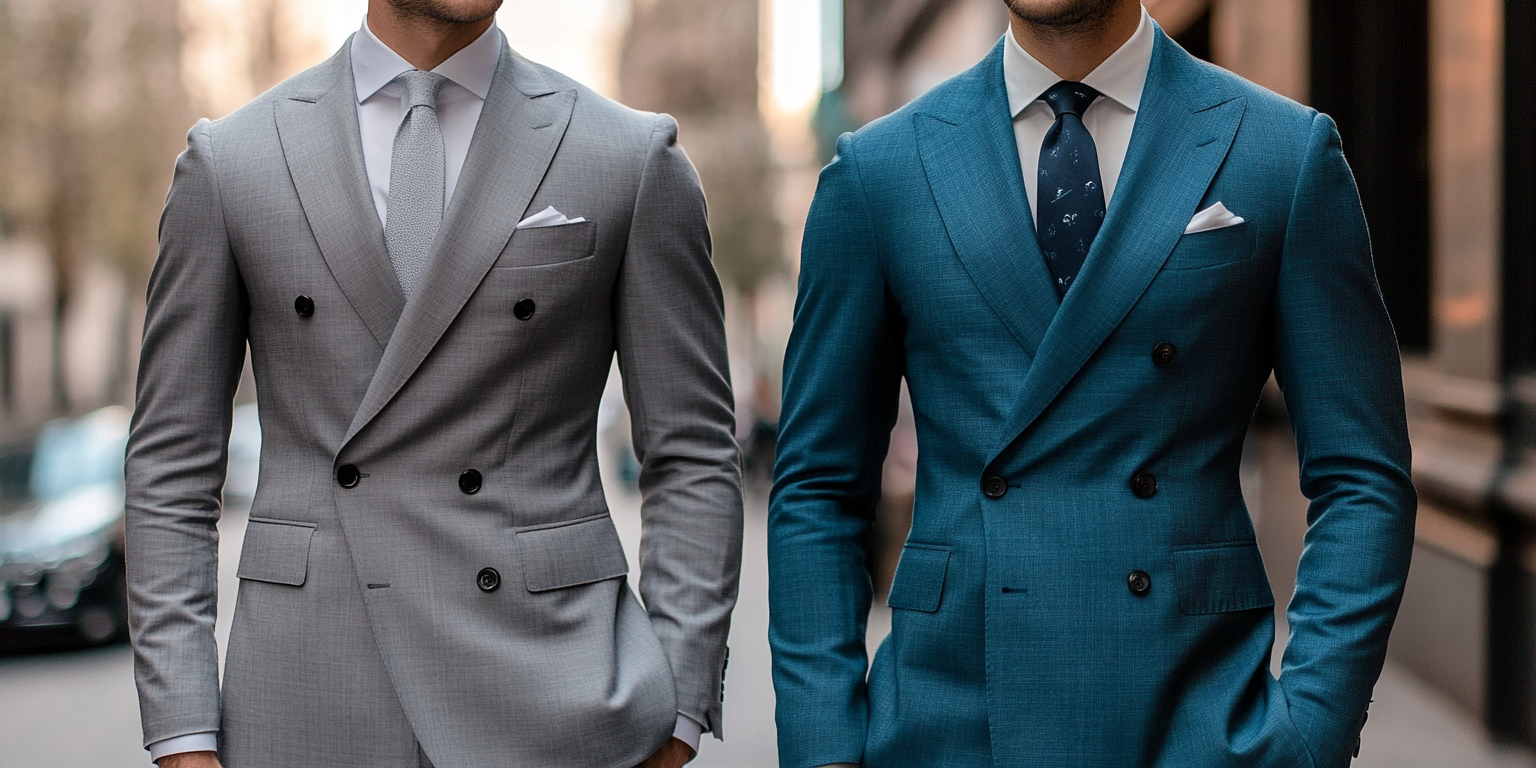










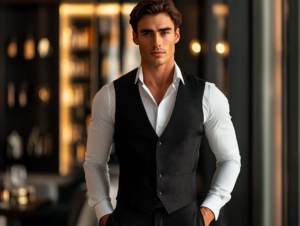

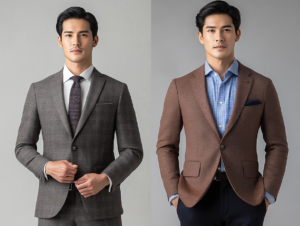
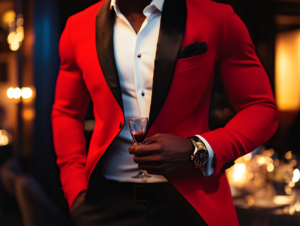

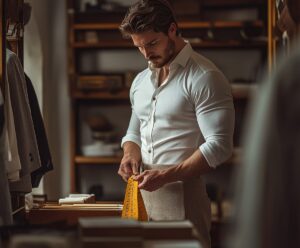
What do you think?
It is nice to know your opinion. Leave a comment.